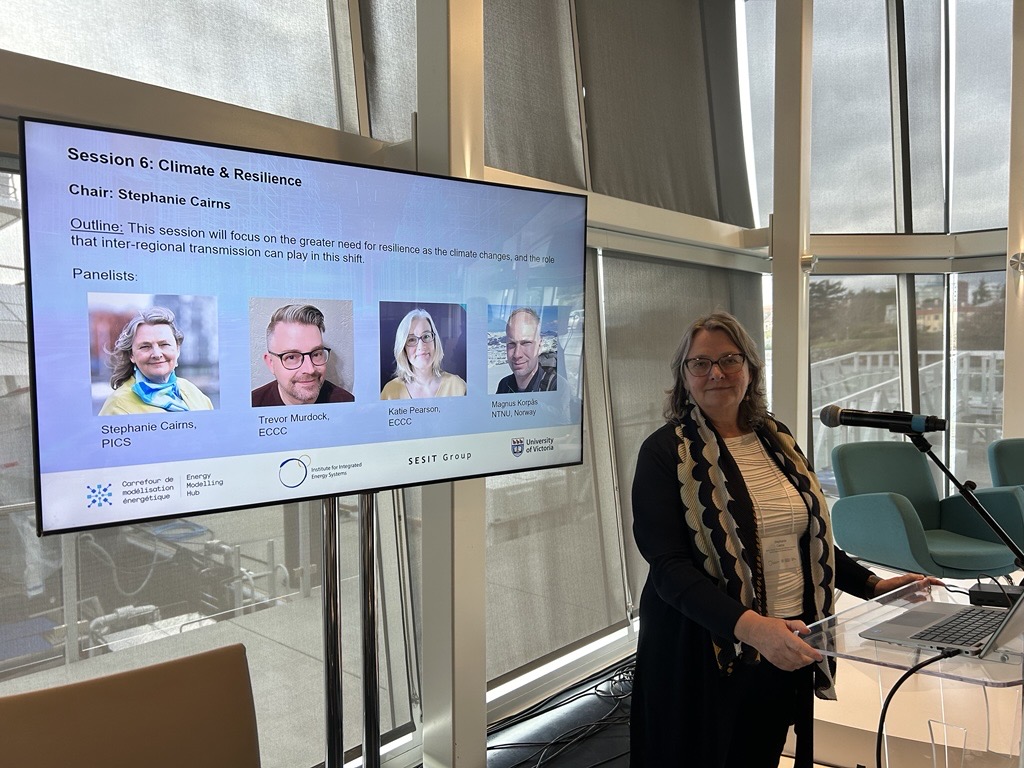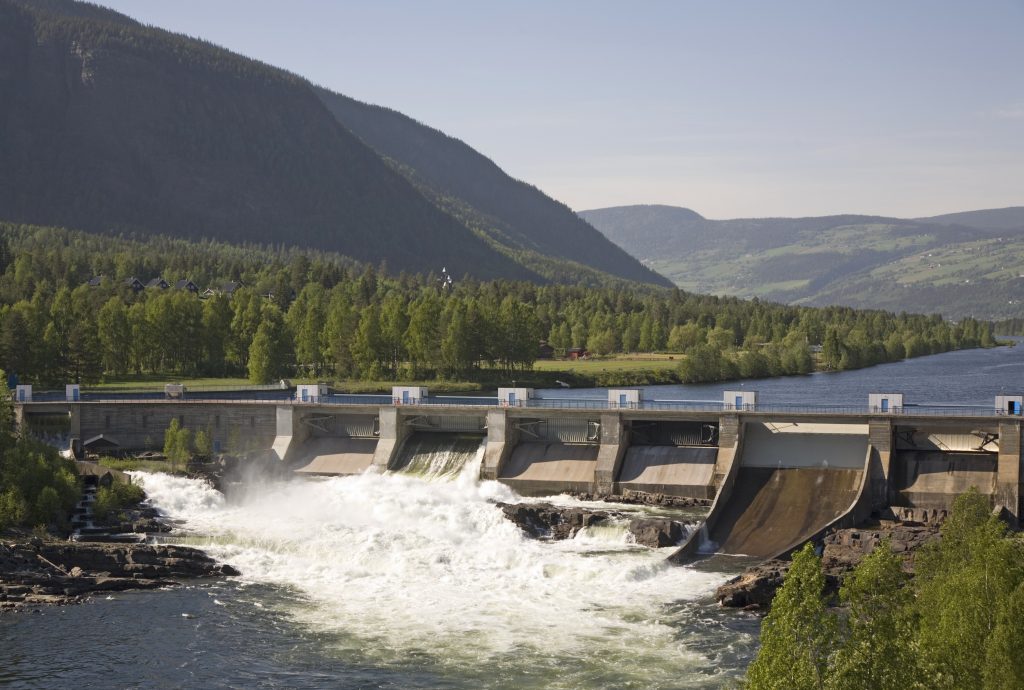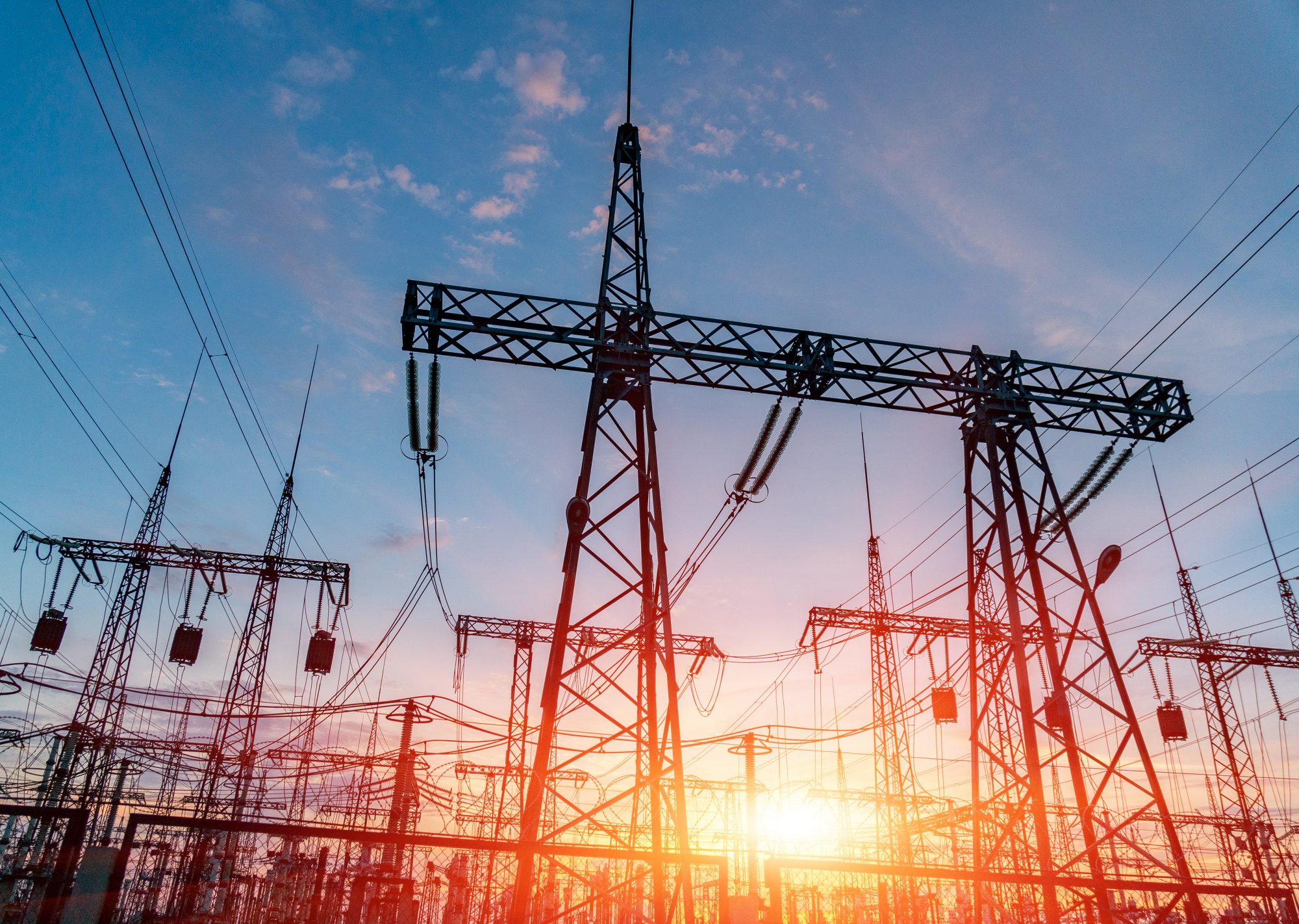Collaborative approaches to electricity resilience from Canada and Norway
Climate change is reshaping the electricity sector. The impacts of fires, floods, droughts, heat domes, and other hazards demand that planners look beyond historical trends and design for a future robust to gradual changes in climate, and able to operate during extreme events and swiftly recover.
This was a key message at Powering Progress: A Dialogue About Inter-Regional Transmission, held in October 2024, where experts from the International Energy Agency and the University of Victoria gathered with B.C. thought leaders to discuss solutions for a rapidly evolving energy landscape.
The symposium was hosted by the Institute for Integrated Energy Systems at the University of Victoria, and the Energy Modelling Hub.
The Pacific Institute for Climate Solutions chaired one of the symposium’s sessions, Climate and Resilience, which focused on this growing dimension of planning for the security and reliability of inter-regional transmission.
Chaired by PICS Senior Director of Strategy and Foresight Stephanie Cairns, the session featured presentations by Trevor Murdock and Katie Pearson of Environment and Climate Change Canada, and Magnus Korpås of the Norwegian University of Science and Technology.

A data-driven approach to resilience
Murdock and Pearson highlighted the work of the Canadian Centre for Climate Services (CCCS), a team of experts turning data into accessible formats. Through tools like climatedata.ca, CCCS provides climate data and projections that empower communities, industries, and governments to make informed decisions.
Relying on historical data for planning and infrastructure design is no longer enough, Murdock and Pearson argued. Climate projections provide tools to anticipate future conditions, including:
- High-resolution data for various climate scenarios
- Tools that help to visualize a city or region’s future climate
- Data for predicting the effect of future climate on infrastructure operations, and energy demand.
“Climate change isn’t waiting, and neither should we,” noted Cairns. “Resilience begins with understanding the challenges ahead and using the best tools to tackle them.”
Norwegian hydropower: a model of resilience
Korpås took attendees across the Atlantic to explore Norway’s hydropower system—a model of renewable energy designed for resilience. With more than 1,600 power plants, 800 reservoirs, and 4,000 kilometers of water tunnels, hydropower generates 90 per cent of the country’s electricity. But Norway’s system does more than just produce renewable energy; it ensures stability and security. Its vast storage capacity—85 terrawatt-hours (TWh), the largest in Europe—lets Norway balance energy supply during both wet and dry years.

During rainy years, Norway exports energy to reduce reliance on fossil fuels in neighbouring countries. In dry years, it imports energy to preserve reservoir levels and avoid rationing. This flexibility is possible because of an interconnected grid that ties Norway to Europe. Such interconnection builds resilience by diversifying energy sources and spreading risks.
A shared vision for resilient energy systems
At the heart of the session was the recognition that resilience requires collaboration. Whether it’s sharing data or sharing power, the future of energy is interconnected. Cairns captured this sentiment, noting that “resilience isn’t just about weathering the storm—it’s about creating systems to thrive together in the face of change.”



